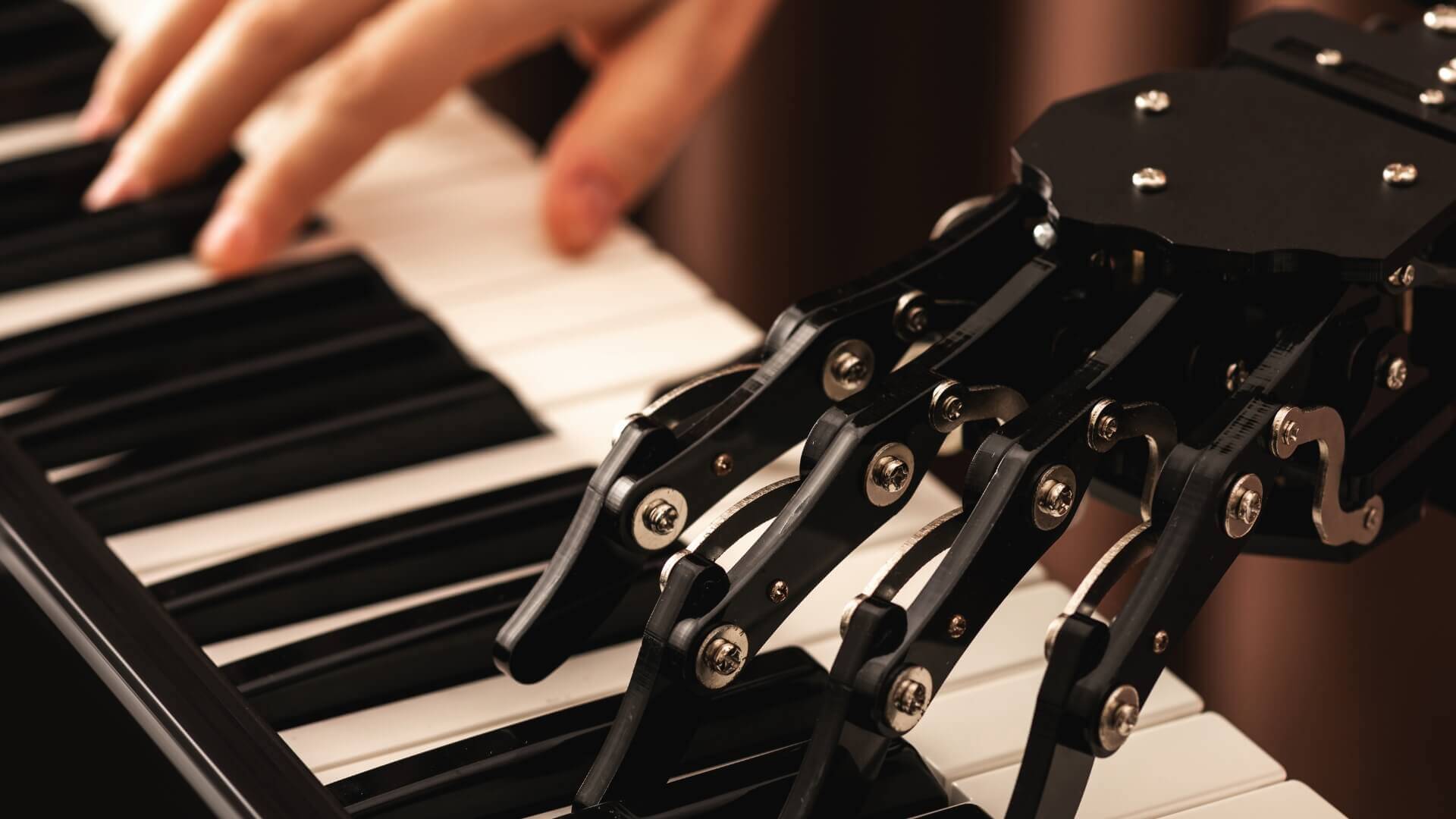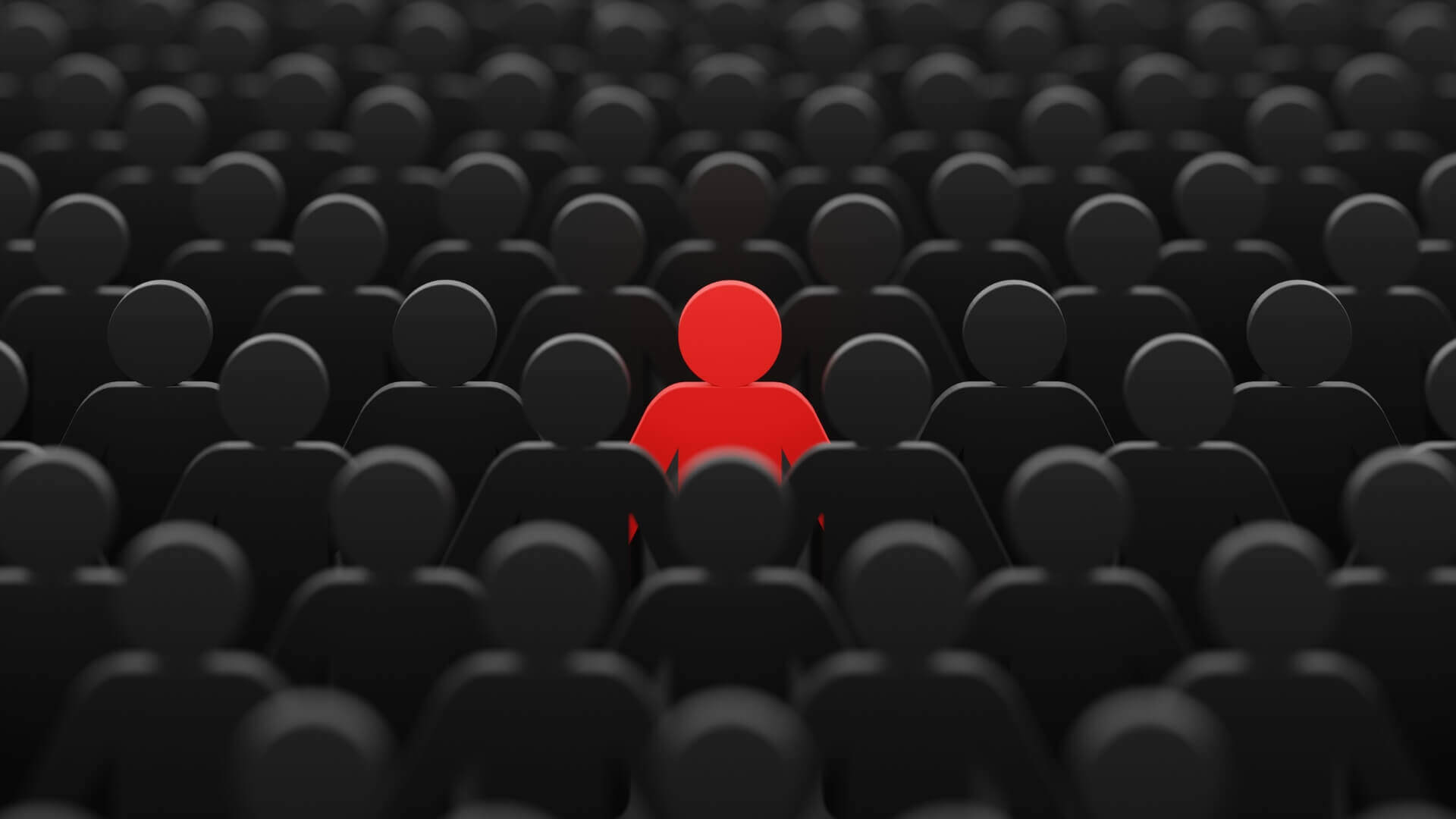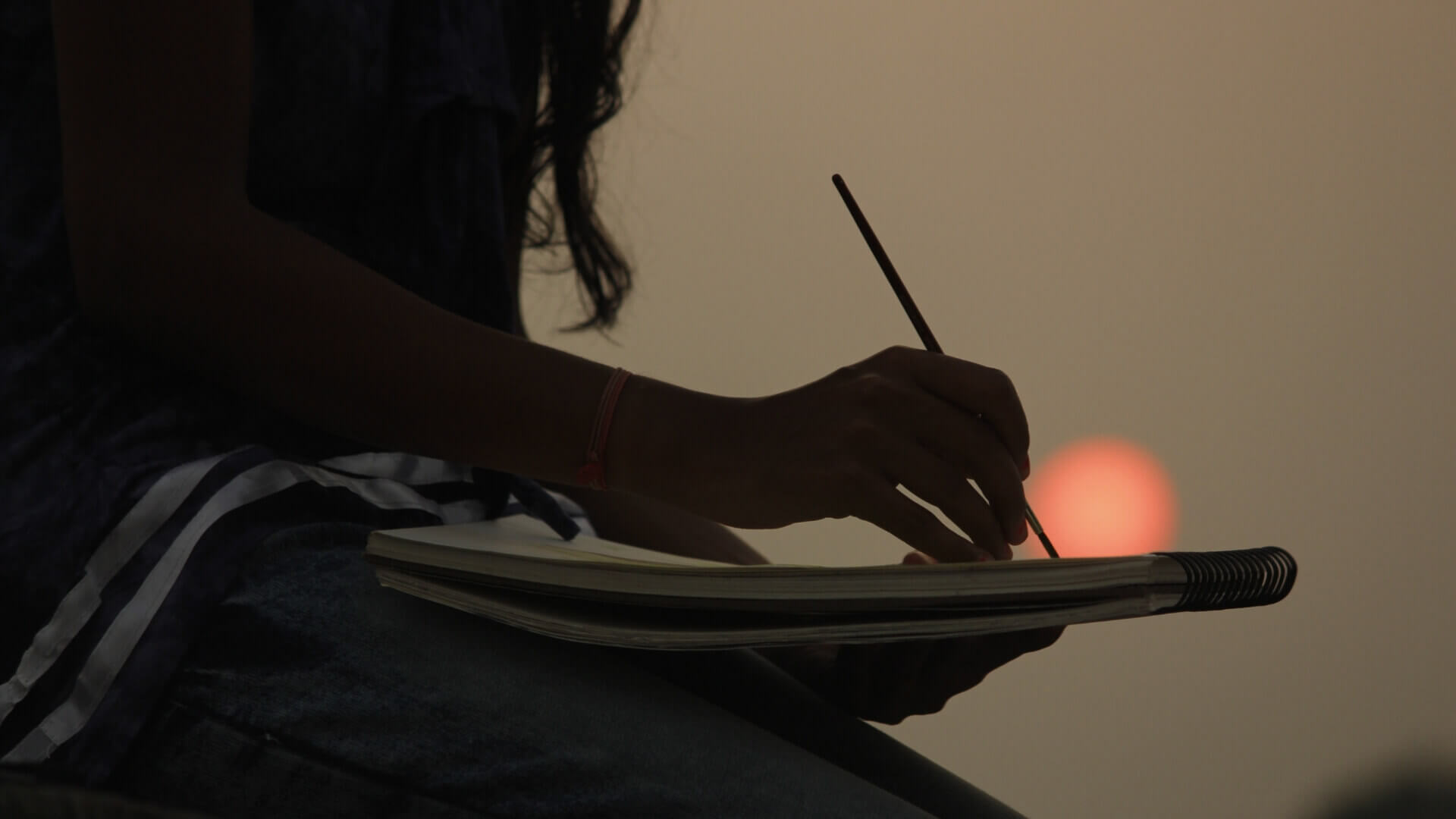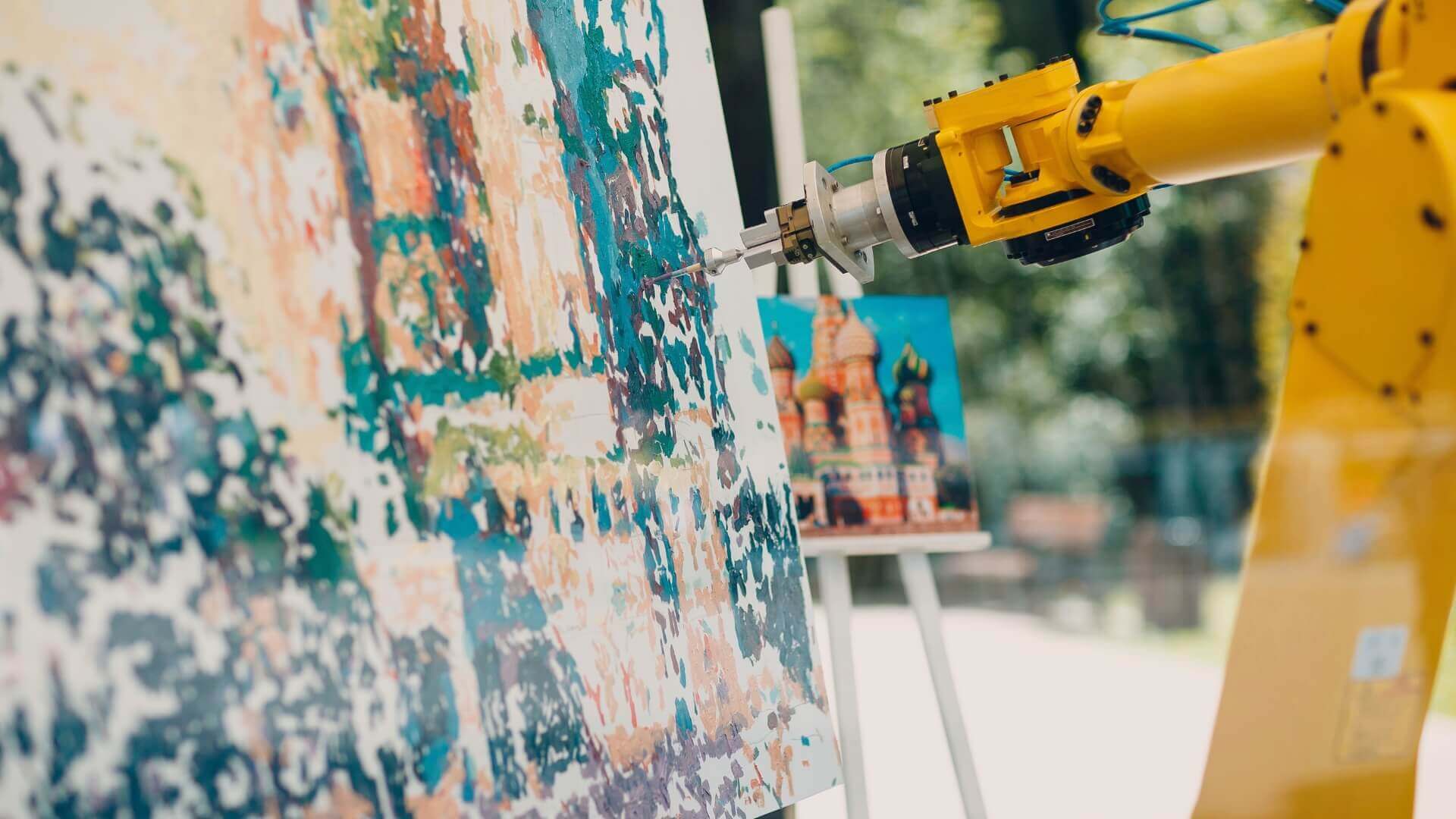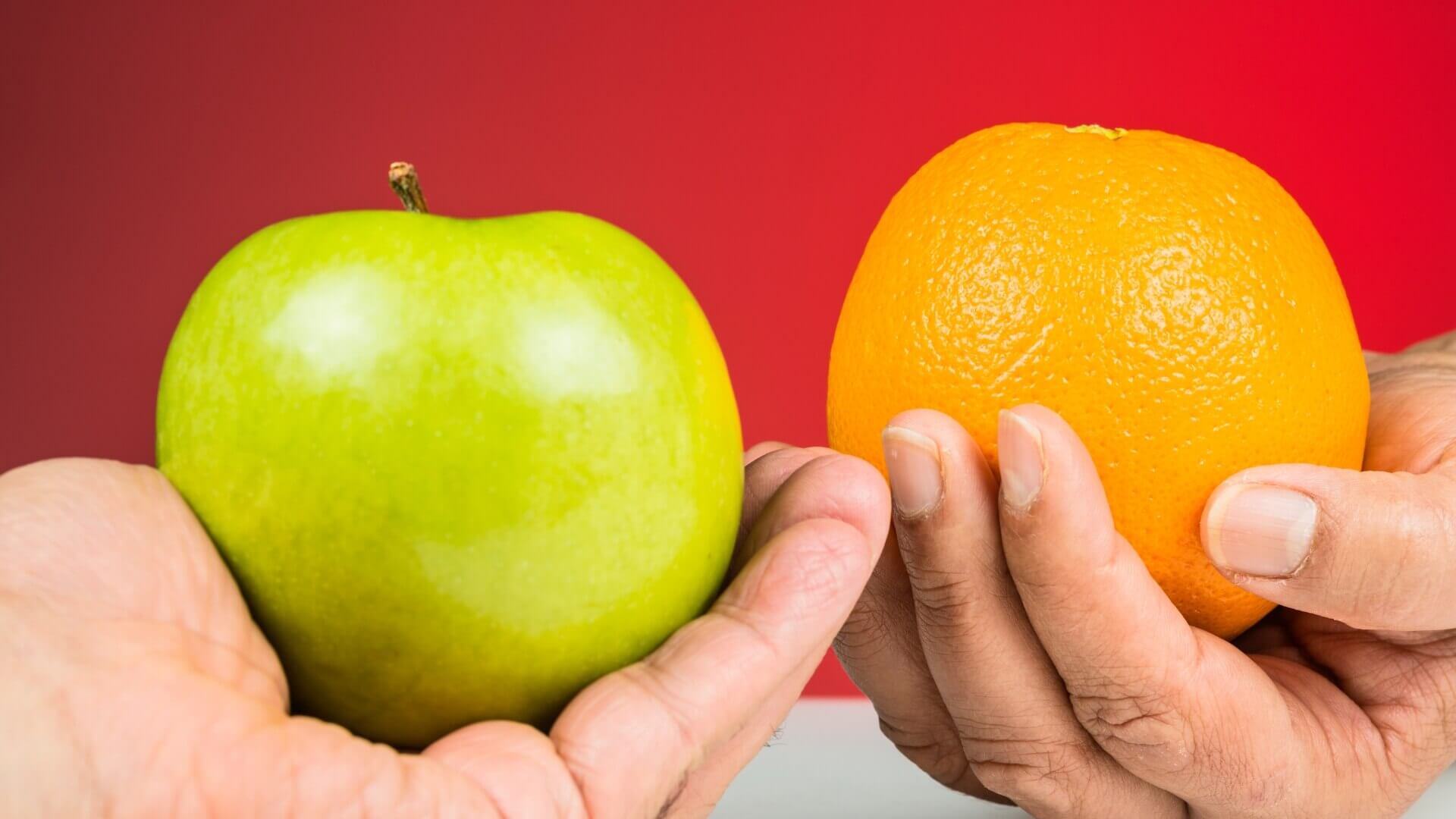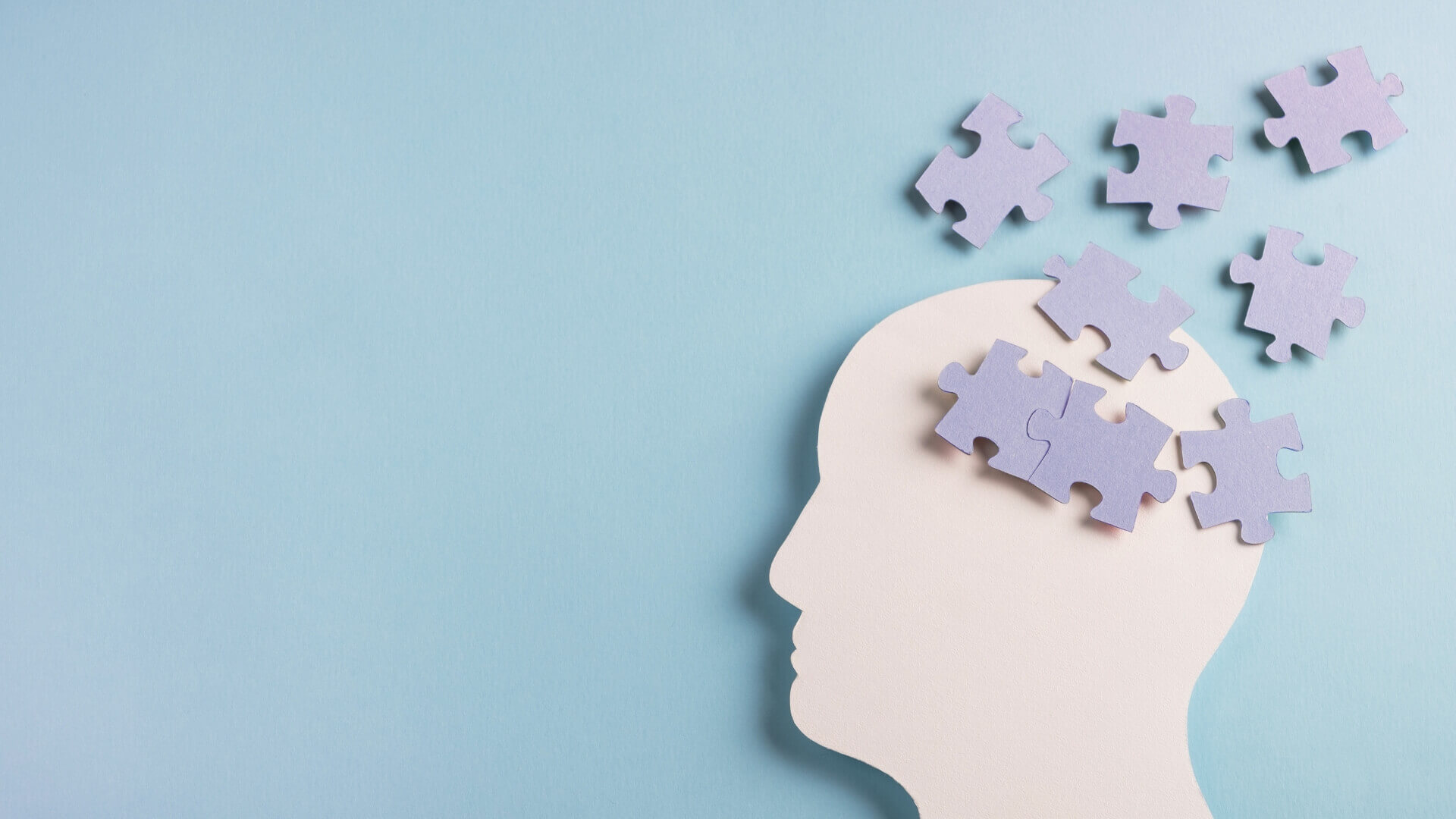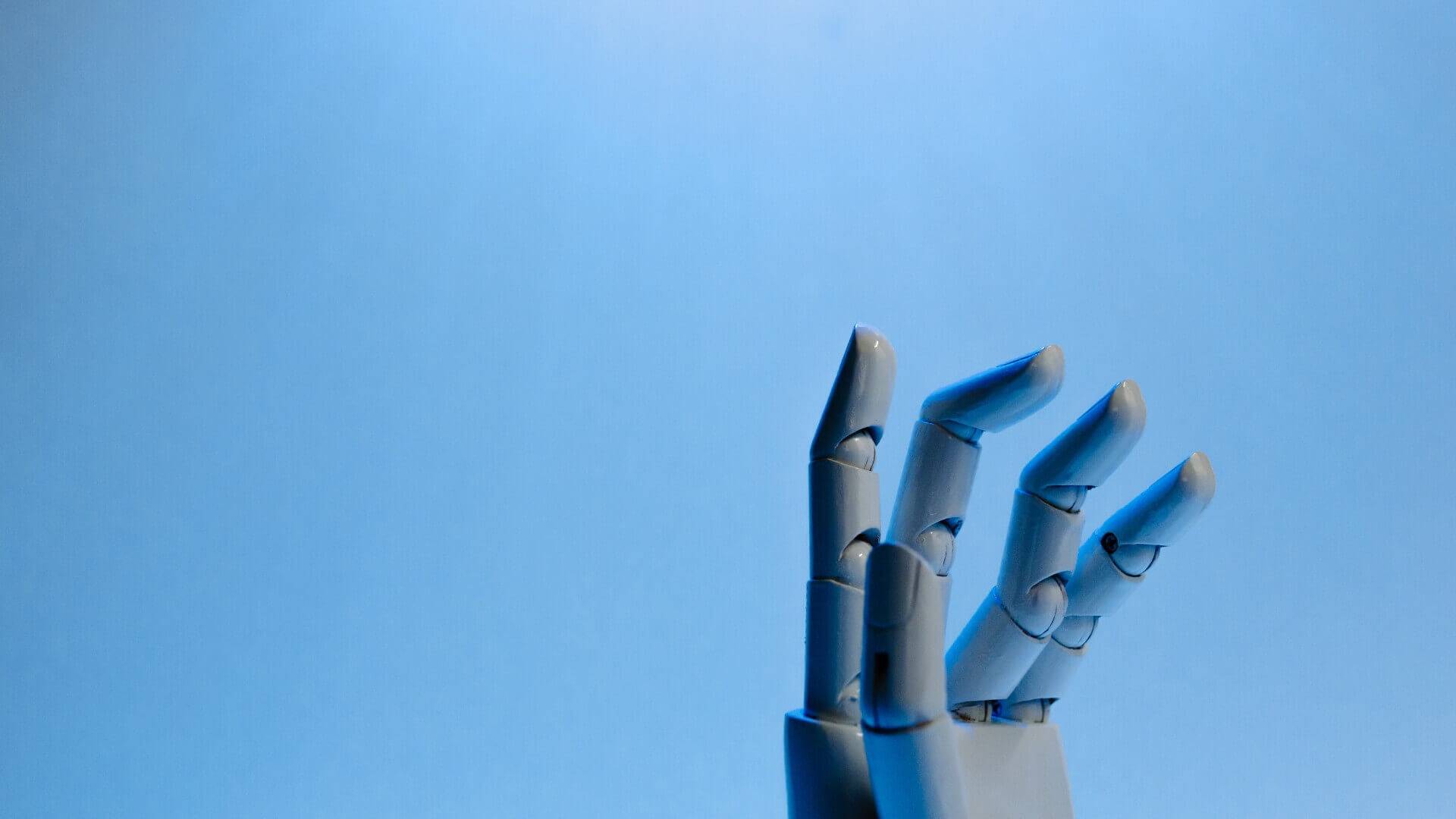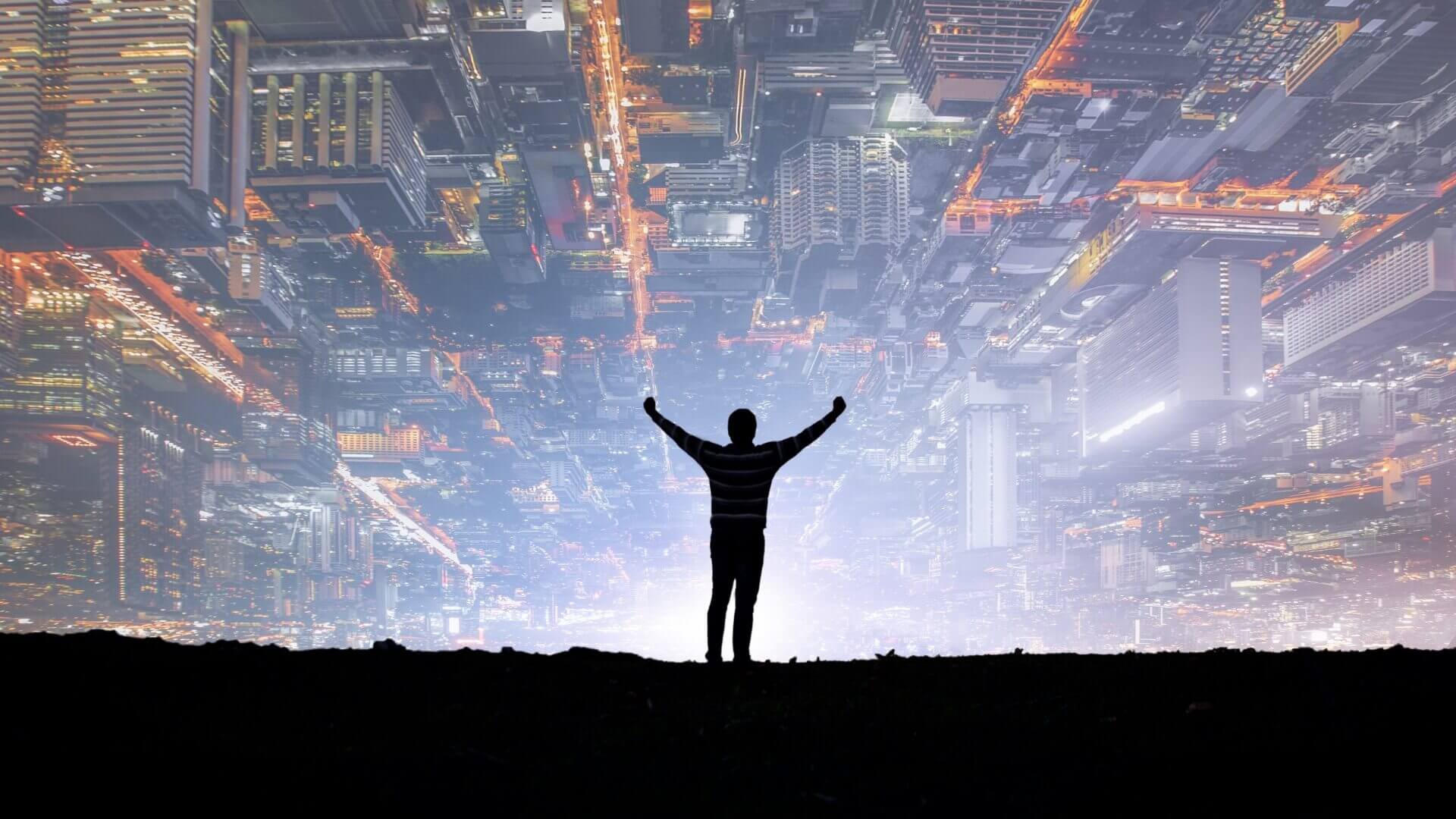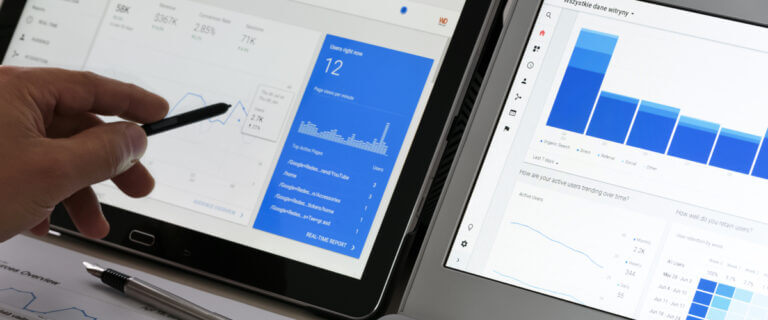Web design is all about creating a great user experience. And that’s where artificial intelligence (AI) comes in—it’s not just a handy tool, but a game-changer. AI has the potential to do a lot from making stunning visuals to improving user flows, changing the way websites are designed, built, and enjoyed. But as these systems get smarter, they also raise some big questions about creativity: Can machines come up with truly new ideas, or are they just copying human brilliance through fancy algorithms?
This debate is more than just technical—it’s also philosophical and psychological. On one side, some people say that AI, with its huge databases and powerful algorithms, can mix and match data in new ways, finding creative solutions humans might miss. They think that AI’s analytical skills could lead to original works. On the other side, some argue that real creativity needs human awareness, emotion, and the mysterious spark of inspiration—things that machines can’t fake just by crunching data.
As AI becomes more integrated into the web design process, from tools that make layout creation easier to advanced systems that predict and improve user interaction, we have to ask: Can a machine make not only practical but also emotionally engaging websites that connect with users? This blog post dives into this unknown area, looking at the relationship and conflicts between AI and human creativity. We’ll see how AI is changing the industry and question whether machines can really be original, and what this means for the future of web design.
Defining creativity and originality
To understand the role of AI and human creativity in the digital field of web design, we need to define what “creativity” and “originality” mean. These terms, often related, are essential in grasping the inputs of both humans and machines.
Creativity involves generating ideas or products that are both novel and appropriate for a given context. In web design, this transcends aesthetic visuals to include innovative problem-solving that enhances user interaction and engagement, employing creative approaches that extend beyond traditional boundaries.
Originality, in a stricter sense, refers to the novelty and uniqueness of ideas or products. In the digital world, this can manifest in groundbreaking technological applications, unique visual styles, or narratives that deeply resonate with users. Originality in web design is about pushing technological and creative boundaries to create something truly unique.
Human designers use their personal experiences, cultural insights, and emotional intelligence to create original work. They rely on intuition, empathy, and a personal touch that connects with people on a human level, often based on the designer’s own life experiences and views. This human-driven originality is marked by an emotional and cultural connection with the audience.
Conversely, AI introduces a different dimension to creativity. Powered by vast data and sophisticated algorithms, AI can identify patterns and generate designs based on extensive information. However, while AI can produce work that might appear novel and functional, its creations often lack the intuitive spark and emotional depth of human-made designs. The originality of AI-generated content, therefore, may seem impressive but often hovers around the sophistication of pattern recognition and data manipulation.
Let’s discuss how web design and graphic design fit in the creative industries. Web designers often make decisions based on their clients and their target audience, which means they sometimes have to ignore their own feelings and creativity and think like others. Some people might think that this kind of design is more business-oriented and influenced by the clients’ profit motives, while others might hire designers for their unique creative style and add some artistic flair to a mostly commercial project, like a web design project, advertising campaign or brand direction.
The real challenge lies in harmonizing these distinct approaches. For human designers, AI can be a powerful tool, augmenting their creative capabilities by automating repetitive tasks and generating data-driven insights, allowing them to focus more on aspects that require deep human intuition. For AI developers, the goal is to push beyond mere mimicry of human output to achieve genuine innovation, creating algorithms capable of producing truly original ideas that are not only novel but also resonate on a deeper, more human level while satisfying the client’s business motives.
This section sets the stage for an ongoing exploration of how AI and human creativity intersect and influence each other, particularly in the evolving field of web design. As we continue, we will delve deeper into the historical evolution of creativity, the philosophical underpinnings of originality, and the practical implications of AI and human collaboration in creative domains.
Historical perspective on creativity
Creativity has been a cornerstone of human development, influencing our culture, technology, and society throughout history. From ancient architectural feats to modern digital landscapes, the journey of creativity reflects our evolving capabilities and aspirations.
Creativity through ages and civilizations
Creativity’s roots can be traced back to ancient civilizations, where it manifested in both practical and artistic forms. The Egyptians built pyramids, a testament to both architectural ingenuity and aesthetic vision, while ancient Greeks advanced art, drama, and philosophy, setting foundational principles that continue to influence today’s creative endeavors.
The Renaissance marked a profound explosion of human creativity. Figures like Leonardo da Vinci and Michelangelo broke new ground in art and science, blending aesthetics with empirical inquiry. This era showcased the human potential to integrate diverse fields of knowledge in ways that propelled societal progress.
The Industrial Revolution introduced a shift towards technological innovation, with creativity increasingly channeled into inventions like the steam engine and mechanization processes that transformed everyday life. This period highlighted the growing importance of technological and practical creativity in shaping modern society.
AI and the modern creative landscape
As the digital age dawned, creativity found new expression through technologies such as the internet and digital media, democratizing content creation and fostering global collaborations that were previously unimaginable.
The development of artificial intelligence has marked the latest chapter in this narrative. AI’s capabilities in creativity, initially seen in simple algorithmic compositions and designs, have grown exponentially. Today, AI generates sophisticated art, composes music, and even authors literary works. These creations challenge our traditional notions of creativity and originality, sparking debates about the role of AI in creative fields.
AI’s integration into web design and digital media is particularly noteworthy. Tools powered by AI optimize user experiences and enhance functionality, allowing for more personalized and dynamic interactions. AI’s ability to process vast datasets and identify emerging trends has become invaluable in predicting user preferences and tailoring digital environments accordingly.
Evaluating the impact of AI
While AI continues to advance, it’s crucial to recognize that its creative outputs are grounded in human-generated data and guided by human design. The true potential of AI in creativity may lie not in replacing human creativity but in augmenting it, enabling new forms of expression and solving complex problems by leveraging both human ingenuity and computational power.
The historical perspective on creativity, enriched by the advent of AI, shows a continuous thread of innovation driven by human curiosity and enhanced by technological advancement. As we move forward, the synergy between human creativity and AI promises to unlock even more groundbreaking possibilities, reshaping our creative landscape in ways we are only beginning to understand.
Understanding originality
To grasp what originality means, we need to explore its philosophical and psychological aspects, especially as we face the challenges of AI in creative domains. Originality usually involves the creation of new and fitting ideas, seen as a sign of human creativity.
Philosophical and psychological perspectives
Philosophically, originality is often associated with authenticity and the ability to transcend existing paradigms. Immanuel Kant viewed originality as a mark of genius, essential for creating works that are not only new but also capable of providing a unique aesthetic experience. Psychologically, originality is linked to divergent thinking, a cognitive process where individuals generate multiple unique solutions to a given problem. This involves not just intellectual capacities but also emotional and motivational factors—traits that are inherently human and influence creativity.
Challenging traditional views through AI
AI has posed a serious challenge to the conventional views of originality. AI algorithms, by using large datasets, can create works that resemble the human quality of novelty. However, whether AI’s creations are truly original is debatable.
Philosophically, if originality means having a unique perception and expression of reality, AI’s lack of awareness and subjective experience may prevent it from being truly original. But this would require us to examine what philosophy has defined as human consciousness, which we will skip for now to focus on the topic of design & business implementation of AI.
Psychologically, while AI can mimic divergent thinking by generating many solutions, it does not connect with these ideas emotionally or personally.
From artworks to literary works and web designs, AI’s abilities have raised questions about the nature of creativity and originality. Can AI’s outputs, remarkable in their complexity and usefulness, be called original if they come from programmed algorithms and learned data patterns? Or is originality intrinsically linked to human experience and emotional depth, aspects that AI cannot currently reproduce? And what about the human-created iterative work that can be done by a human designer or artist either consciously or subconsciously through various influences and education over the years?
Implications for creative collaboration
When AI joins forces with creative processes, it opens up new doors for cooperation between human instinct and AI’s processing speed. For instance, in web design, AI can create personalized user experiences and handle design tasks automatically, which boosts productivity and lets human designers tackle more complex, creative problems. This mutual relationship points to a future where originality is not just the domain of human or machine but a result of their interplay.
As we keep exploring AI’s role in creativity, it is obvious that our concepts and comprehension of originality must change. The ongoing conversation between the abilities of human creators and the computational power of AI is altering our views, pushing us to reexamine the limits of creativity and the core of originality. This changing understanding aims to transform the creative landscape, mixing human emotional depth with AI’s analytical skill to break new ground in creative expression.
AI’s creative capabilities
AI has advanced a lot in creative fields, showing skills in making art, music, literature, and web design. Many products that use AI are popular and common in people’s devices and work. Whether it’s an AI image algorithm, a Windows 11 language model, an image or music maker like Suno AI music generator, we’ve all seen AI’s creative choices. These examples raise questions about originality, privacy, and human awareness of such choices.
Showcasing AI-generated designs and content
AI tools have created artworks in visual arts that mix styles from different times and places, such as DeepArt, DALL-E, Stable Diffusion, and Midjourney. These systems make art that has new visual expressions that merge in an original and unique way.
The music industry has used AI like Google’s Magenta, OpenAI’s MuseNet, or Suno recently to make pieces from classical to modern genres, using deep learning to find and create patterns in music that lead to new compositions. Also, AI has helped in music to split vocals and instruments from a single track that is not layered, so that they can combine and mix music in new ways and use them in new artistic pieces.
In literature, AI such as GPT-3, GPT-4 and GPT-4o have written texts from poetry to fiction stories, showing a skill to make coherent and rich stories with context.
In web design, AI applications like The Grid and Wix ADI make layouts and user interfaces by themselves by learning from user choices and existing design rules, making the design process much faster and customizing user experiences.
Analyzing AI’s innovation capabilities and limitations
AI excels in environments where large datasets can be analyzed to identify trends and styles, allowing for the generation of content that aligns with these findings. This capability enables AI to perform iterative learning and cross-domain applications effectively, suggesting a form of creativity that is defined by data-driven innovation.
However, AI’s approach to creativity has intrinsic limitations. While AI can simulate novel combinations and offer technically impressive outputs, it lacks the ability to imbue its creations with the emotional depth and subjective experiences that are hallmarks of human creativity. AI-generated works, though often innovative, typically do not carry the emotional resonance or the contextual nuances that human creators naturally embed in their art.
Furthermore, AI’s dependency on pre-existing data means its “originality” is fundamentally tied to human inputs, limiting its ability to venture beyond known boundaries without human intervention.
Critics argue that true innovation involves more than just novel recombinations; it requires a consciousness and a depth of feeling—qualities AI does not possess. Thus, while AI can assist and augment the creative process, it is unlikely to supplant the intuitive and emotional aspects of human creativity.
Human vs. machine: A comparative analysis
The interplay between human creativity and artificial intelligence presents a fascinating dichotomy that highlights the unique strengths and limitations of both. This comparative analysis delves into the essence of what differentiates human creators from their AI counterparts and examines how these differences shape creative outputs.
Human creative traits
Humans bring a depth of emotional intelligence to their creative endeavors, capable of infusing empathy, humor, and nuanced feelings into their works. This ability not only enhances the emotional resonance of creations but also enables designs and narratives that connect deeply with audiences on a personal level. Additionally, humans draw heavily from their cultural backgrounds and personal experiences, which enrich their creative outputs with contextual and cultural relevance.
The human capacity for storytelling is particularly distinct, allowing for narratives that engage users emotionally and memorably. Human creativity is also marked by adaptability and an intuitive sense of what ‘feels right,’ which is often informed by a lifetime of personal and shared experiences.
AI’s creative capabilities
AI excels in processing and analyzing vast quantities of data, identifying patterns that may elude human perception. This capability allows AI to generate designs, content, and solutions that are highly informed by existing data insights, making it invaluable for tasks that require speed, consistency, and precision. AI’s strength in rapid iteration facilitates a level of experimental creativity that can significantly speed up the creative process, allowing human designers to explore a broader range of possibilities.
However, AI lacks the ability to truly understand and integrate cultural nuances or to create with the emotional depth that comes naturally to humans. While AI can mimic certain emotional expressions and generate novel combinations of known elements, it does not possess the lived experiences or the capacity for empathetic understanding that humans use to inform their creative decisions.
Synergizing human and machine creativity
The future of creativity likely lies not in choosing between human or machine but in leveraging the strengths of both to enhance creative outcomes. While AI can augment human creativity by handling data-intensive tasks and generating new possibilities through pattern recognition, human creators are essential for integrating emotional depth, ethical considerations, and cultural relevance into creative works.
This symbiotic relationship can lead to innovative solutions that neither humans nor AI could achieve independently, combining human ingenuity with AI’s computational power to push creative boundaries further. The collaboration between human and machine opens up new frontiers of innovation and expression, promising a richer, more diverse creative landscape.
The role of consciousness and emotion in creativity
The role of consciousness and emotion in creativity underscores some of the most profound differences between human and machine capabilities. This exploration into how these deeply human aspects influence creativity also serves to question the extent to which AI can emulate these traits.
Human consciousness and emotional depth
Human creativity is intrinsically linked to consciousness and emotion. Our ability to feel and express a range of emotions not only fuels creative inspiration but also allows for a deep connection with audiences. Emotions such as joy, sorrow, and wonder are often the genesis of compelling narratives and powerful artworks, imbuing them with a universal resonance that is deeply felt by others.
- Emotional Influence: Human emotions influence every stage of the creative process, from the initial spark of inspiration to the motivation that drives the creation to completion. For example, Vincent van Gogh’s paintings are widely regarded as expressions of his emotional turmoil, as he used vibrant colors and swirling brushstrokes to convey his mood and mental state.
- Personal Narrative and Expression: The consciousness of being, combined with personal experiences, allows humans to create works that reflect their unique perspectives, adding authenticity and depth that resonate on a personal level. For example, Maya Angelou’s poems are powerful testimonies of her life experiences as a Black woman in America, drawing from her struggles and triumphs to inspire readers with her courage and wisdom. It’s this authenticity that makes us humans connect with each other on a deeper level, seeing ourselves in each other’s personal journey mediated by a creative work of art.
AI’s simulation of emotional depth
While AI has made significant strides in analyzing and generating patterns that mimic emotional expressions, it fundamentally lacks the ability to experience emotions.
- Personal Narrative and Expression: The consciousness of being, combined with personal experiences, allows humans to create works that reflect their unique perspectives, adding authenticity and depth that resonate on a personal level. For example, Maya Angelou’s poems are powerful testimonies of her life experiences as a Black woman in America, drawing from her struggles and triumphs to inspire readers with her courage and wisdom. It’s this authenticity that makes us humans connect with each other on a deeper level, seeing ourselves in each other’s personal journey mediated by a creative work of art. While AI has made significant strides in analyzing and generating patterns that mimic emotional expressions, it fundamentally lacks the ability to experience emotions.
- Emotional Mimicry vs. Authenticity: AI can synthesize emotional cues in content, such as altering music dynamics or visual aesthetics based on predefined emotional inputs. However, these outputs, while technically competent, often lack the spontaneity and genuineness of human-created works. For instance, an AI-generated song may have the appropriate tempo, pitch, and lyrics to convey a certain mood, but it may not capture the nuances and subtleties of human expression that make music emotionally engaging. Moreover, AI-generated art may not reflect the personal narrative and expression of the creator, which is an essential aspect of human creativity. While AI can create viable commercial art that appeals to a mass audience, it may fall short of creating relatable emotional pieces that cater to a specific niche or provide high quality emotional experiences.
- Challenges in Emulating True Emotion: AI’s approach to creating emotion-focused content is based on logical algorithms and lacks the subjective experience of emotions. This results in creations that may mimic the form of human emotions but not their essence. A case in point is the AI chatbot Replika, which is designed to provide emotional support and companionship to users. While Replika can generate responses that seem empathetic and caring, it cannot truly feel or understand the emotions of its users, nor can it develop a genuine bond with them.
The future role of AI in emotional creative tasks & education
Looking forward, the potential for AI in creative domains involving emotion and consciousness is still a subject of both opportunity and limitation. While AI can aid in tasks that require the analysis of large data sets for pattern recognition and can aid in the technical aspects of creative production, the depth of emotional insight and the subjective nature of consciousness are likely to remain distinctly human traits.
- Complementary Collaboration: The most promising approach may involve a symbiotic relationship where AI enhances human creativity by handling analytical tasks, thereby freeing humans to delve deeper into the emotional and narrative aspects of creative work. For example, AI can assist writers by generating plot outlines, character profiles, or dialogue options, while the writers can focus on the emotional arc, the thematic message, and the stylistic choices of their stories. Similarly, AI can help musicians by composing melodies, harmonies, or rhythms, while the musicians can concentrate on the emotional expression, the genre conventions, and the artistic vision of their songs.
The essence of human creativity, shaped by our consciousness and emotional depth, poses significant challenges for AI to authentically replicate. While AI can support and augment certain aspects of the creative process, the unique and ineffable qualities of human emotion and consciousness continue to define truly resonant and profound creative works. The ongoing collaboration between human intuition and AI’s analytical capabilities promises to enrich the creative landscape, yet the core of emotional depth will likely remain a bastion of human creativity.
As we look further into the future, AI models have the potential to enable synchronized learning, where new data sets added to the learning structure can generate new ideas or complementary insights that can be accessed by millions of humans using the same AI model. This creates a large, ever-improving, intelligent network that improves whenever a new point of data entry is added. This phenomenon is similar to the introduction of the internet, which dramatically increased the global access of information across the world. Suddenly, all humans from across the world with internet access were able to learn and gain access to millions of articles, ideas, services, and inventions that previously took years to spread across countries, geographic regions, or languages.
AI has the capability of taking this further by iterating, translating, and providing knowledge in various accessible ways to demographics across the world as well as the smart devices that we use on a daily basis. This could mean someday being able to use an AI powered brain implant that’s capable of translating any language in real time for us or providing knowledge on demand for various tasks in our daily life.
However, while the software has the capabilities to learn from us and help us, hardware innovations will truly determine how much it will become part of our own human life, and what it would mean for future generations. How will we adapt to a world where all of human knowledge can be implanted into our brains with a simple device, and what will that mean for our education, our creativity, and our humanity? How will we cultivate skills like innovation, empathy, and problem-solving when learning and memorizing new information will not be a challenge anymore?
How will we express ourselves creatively when AI can generate content and pieces for us with ease? These are some of the questions that we will have to face in the age of unlimited information access and AI augmentation.
Ethical and societal implications of AI in creative industries
The integration of AI into creative industries presents a range of ethical and societal challenges that necessitate careful consideration and proactive management. As AI’s capabilities expand, its impact on these industries and the broader societal implications become increasingly significant.
Navigating ethical challenges
The proliferation of AI-generated content introduces complex questions about authorship and originality:
- Intellectual Property: Determining the ownership of AI-generated content is challenging. For instance, in 2018, a portrait created by an AI algorithm was sold for $432,500 at Christie’s auction house, raising questions about who should be credited and compensated for the artwork: the AI, the programmers, or the art collective that initiated the project.
- Bias and Fairness: AI can perpetuate existing biases present in the training data, leading to content that may unintentionally reinforce stereotypes or marginalize certain groups. Ensuring that AI systems are trained on diverse and inclusive data sets is crucial to mitigate these risks. For example, in 2016, Microsoft’s chatbot Tay was manipulated by online users to produce racist and sexist tweets, demonstrating how AI can be influenced by the biases of its environment. Another example is the facial recognition software that has been shown to have lower accuracy for people of color and women, resulting in potential discrimination and misidentification.
- Transparency and Accountability: There must be clear disclosure when AI is used to create content, ensuring that consumers are aware of what they are engaging with and can make informed decisions about the authenticity of the content. For instance, in 2019, the Wall Street Journal reported that the Chinese app Zao allowed users to swap their faces with celebrities in videos, raising concerns about the potential misuse of deepfakes for fraud or defamation. Another example is the OpenAI’s text generator GPT-3, which can produce convincing but false texts on various topics, requiring careful evaluation of the sources and veracity of the generated content.
Addressing societal implications
The rise of AI-generated content also poses risks related to misinformation and the erosion of trust in creative outputs. The ability of AI to produce realistic yet fabricated content, such as deepfakes, calls for robust mechanisms to ensure the integrity and authenticity of creative works.
- Governance and Regulation: Developing comprehensive governance frameworks that address ownership, attribution, and fair compensation for AI-generated works is essential. These frameworks should also tackle the ethical use of AI in creativity, focusing on promoting transparency, accountability, and inclusiveness. For example, the European Commission has proposed a set of legal and ethical principles for trustworthy AI, which include human oversight, diversity, and fairness. Similarly, the World Economic Forum has launched the Global AI Action Alliance, a multi-stakeholder platform that aims to foster responsible and ethical use of AI across various domains, including arts and culture.
- Public Engagement and Education: Enhancing public understanding of AI’s role in creativity through education and open dialogue can help society navigate the ethical complexities AI introduces. This approach encourages a well-informed public that can critically assess and engage with AI-generated content. For instance, the AI and Media Integrity Steering Committee, composed of experts from academia, industry, and civil society, has developed a toolkit to help journalists and media consumers detect and respond to synthetic media, such as deepfakes. Another example is the AI Literacy initiative, which provides online courses and resources to help learners of all ages and backgrounds develop basic knowledge and skills related to AI.
As AI continues to embed itself in the fabric of creative industries, the collaboration between policymakers, industry leaders, and ethical experts becomes crucial. Together, they must forge pathways that not only harness AI’s potential to innovate and democratize creativity but also address the profound ethical and societal challenges it presents. This balanced approach will ensure that the creative landscape remains vibrant and equitable in the age of AI.
Future prospects
As we look towards the horizon of AI in creativity, the landscape brims with transformative potentials:
- Advanced Emotional Intelligence and Contextual Awareness: Future AI systems are expected to exhibit heightened emotional intelligence and sophisticated contextual awareness, allowing them to generate content that is not only technically impressive but also emotionally resonant and culturally relevant. For example, AI systems could analyze user feedback and preferences to create personalized and adaptive web designs that cater to different needs and emotions.
- Generative Capabilities and Collaborative Tools: Innovations like Generative Adversarial Networks (GANs) and multimodal AI systems will likely revolutionize how content is created across mediums, providing tools that can produce complex, realistic, and diverse outputs that may soon rival human-created content in quality and creativity. For example, GANs could generate realistic images and videos for web design, while multimodal AI systems could combine text, audio, and visual elements to create immersive and interactive web experiences.
- Enhanced Human-AI Collaboration: The evolving synergy between AI and human creators will continue to deepen, potentially leading to new forms of artistic expression where AI assists in creative processes without displacing the unique contributions of human creativity. For example, AI systems could augment human web designers by suggesting design elements, optimizing layouts, and automating tedious tasks, while human designers could provide feedback, guidance, and creative direction to the AI systems.
Conclusion
Throughout our exploration of AI and human creativity, we have navigated through discussions on originality, the role of emotions and consciousness, and the societal and ethical implications of AI in the creative sectors. The nuanced interplay between human ingenuity and AI’s computational abilities is redefining the boundaries of creativity, particularly in fields like web design where these technologies can dramatically enhance user experiences and operational efficiencies.
Reflections on the Future of Creativity in Web Design Influenced by AI:
- Integrating AI into Creative Workflows: AI will increasingly serve as a co-creator in web design, providing tools that enhance the creative capabilities of human designers. This collaboration is poised to unlock new creative potentials and redefine user engagement through more personalized and interactive web experiences.
- Ethical and Societal Considerations: As AI becomes more embedded in creative processes, maintaining transparency, ensuring fairness, and protecting intellectual property will become paramount. It will be crucial to establish robust ethical guidelines and governance frameworks to navigate these challenges.
- Preserving Human Creativity: Despite AI’s advancements, the irreplaceable qualities of human creativity—such as emotional depth, cultural nuance, and ethical judgment—will continue to play a critical role in the creative industries. The future of creativity will likely embrace a hybrid model where AI augments human creativity, rather than replacing it.
As we venture further into an AI-integrated future, the creative industries stand on the brink of a new era where human creativity and machine intelligence coalesce to foster unprecedented innovation. By embracing this synergistic partnership, we can ensure that the future of web design not only leverages the strengths of AI but also preserves and celebrates the essence of human artistic expression.




